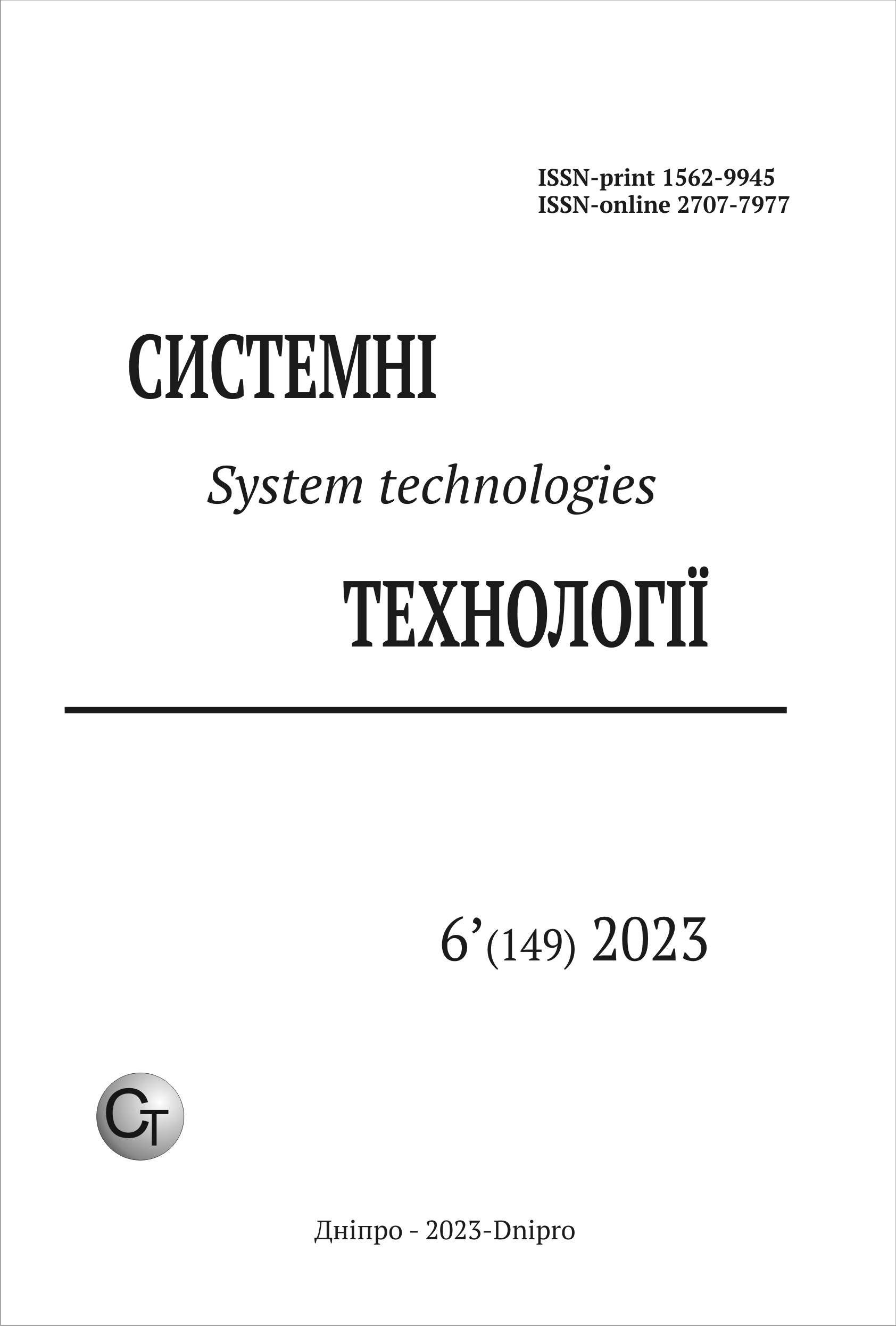МАТЕМАТИЧНІ СИСТЕМИ ДЛЯ РЕАЛІЗАЦІЇ ШТУЧНИХ НЕЙРОННИХ МЕРЕЖ, ОРІЄНТОВАНИХ НА ХМАРОВІ ОБЧИСЛЕННЯ
DOI:
https://doi.org/10.34185/1562-9945-6-149-2023-06Ключові слова:
штучний інтелект, хмарові обчислення, нейронні мережі, нечіткі множини, параметри мережі, вхідні зв’язки, комбінаторна модель, еталонні ситуації.Анотація
Стаття дає детальний огляд дослідження, що концентрується на штучних нейронних мережах (ШНМ) та їх застосуванні в хмарових обчисленнях. Методи дослідження організаційного розвитку і змін на основі технологій штучного інтелекту і систем інтелектуальної підтримки представлені в площині: інтелектуальних експертних систем; індуктивних систем; семантичних мереж, нейронних мереж, генетичних алгоритмів. Мета дослідження. Дослідження спрямоване на вивчення та аналіз сучас-них математичних систем, які використовуються для реалізації штучних нейронних мереж (ШНМ). Основний фокус роботи зосереджений на тому, як кожен штучний нейрон у мережі характеризується своїм поточним станом, що аналогічно до нерво-вих клітин головного мозку, здатних бути збудженими або загальмованими. Подано детальний опис функціонування нейронів, включно з процесами сумування вхідних сиг-налів і активації за допомогою активаційних функцій. Особлива увага приділяється ба-гатошаровим нейронним мережам та їх здатності формувати складні багатовимірні функції. Визначено методи побудови моделей ухвалення рішень, виходячи з аналізу не-чітких ситуацій та еталонних станів, визначених експертами. Розглянуто процес зі-ставлення реальних станів організацій з еталонними для ухвалення оптимальних рі-шень. Описано важливість нечітких логічних операцій для визначення ступеню близь-кості різних ситуацій. Запропоновано нечіткі еталонні ситуації для хмарових обчис-лень та їх вплив на ухвалення рішень у різних сценаріях. Подано приклади реальних та гіпотетичних нечітких ситуацій, а також розглянуто способи визначення нечіткої відповідності між різними еталонними ситуаціями. Заключна частина анотації акце-нтує на можливостях та перевагах застосування подібних моделей в хмарних обчис-леннях, підкреслюючи їх значення для розвитку організацій та систем.
Посилання
Brynjolfsson E., McAfee A. Race Against the Machine: How the Digital Revolution is Accelerating Innovation, Driving Productivity, and Irreversibly Transforming Employment and the Economy. Lexington, Massachusetts: Digital Frontier Press. 2012. 244 p.
Hamill Jasper. Artificial muscle could make robots 15 times stronger than humans. New York Post. Last modified. 2017. September 19. URL: https://nypost.com/2017/09/19/artificial-muscle-could-make-robots-15-times-stronger-than-humans/ (дата звернення 21.12.2023).
Hanelt A., Bohnsack R., Marz D., Antunes Marante C. A systematic review of the literature on digital transformation: Insights and implications for strategy and organizational change. Journal of Management Studies. 2021. Vol. 58. N°5. pp. 1159-1197. URL:
https://www.igiglobal.com/pdf.aspx?tid=309395&ptid=277523&ctid=4&oa=true&isxn=9781799893783. (дата звернення 21.12.2023).
Jin K. H., McCann M. T., Froustey E., Unser M. Deep convolutional neural network for inverse problems in imaging. IEEE Transactions on Image Processing. 2017. 26. pp. 4509–4522.
Liu S., Yan J., Zhang S., Lin H. Can the digital transformation of enterprise management improve the efficiency of input and output?. Management World. 2021. 37(05). pp. 170-190. DOI: 10.19744/j.cnki.11-1235/f.2021.0072.
Makedon V., Dzeveluk A., Khaustova Y., Bieliakova O., Nazarenko I. Enterprise multi-level energy efficiency management system development. International Journal of Energy, Environment, and Economics. 2021. Volume 29. Issue 1.
pp. 73-91.
Masoud R., Basahel S. The Effects of Digital Transformation on Firm Performance: The Role of Customer Experience and IT Innovation. 2023. 3. pp. 109–126. DOI: https://doi.org/10.3390/digital3020008.
McAfee A., Brynjolfsson E. Machine, Platform, Crowd: Harnessing Our Digital Future. New York: W.W. Norton & Company, 2017. 340 p.
Ran Gilad-Bachrach, Nathan Dowlin, Kim Laine, Kristin Lauter, Michael Naehrig, John Wernsing. CryptoNets: Applying neural networks to encrypted data with high throughput and accuracy”. 2016. International Conference on Machine Learning 48:201-210; URL: http://proceedings.mlr.press/v48/. (дата звернення 21.12.2023).
Ross P., Maynard K. Towards a 4th industrial revolution. Intelligent Buildings International. 2021. 13(3). pp. 159-161. DOI: 10.1080/17508975.2021.1873625.
Selsam D., Lamm M., Bunz B., Liang P., de Moura L., and Dill D. L. Learning a sat solver from singlebit supervision. International Conference on Learning Representations, 2019. 278 p.
Shelukhin M., Kupriichuk V., Kyrylko N., Makedon V., Chupryna N. Entrepreneurship Education with the Use of a Cloud-Oriented Educational Environment. International Journal of Entrepreneurship. 2021. Volume 25. Issue 6. URL: https://www.abacademies.org/articles/entrepreneurship-education-with-the-use-of-a-cloudoriented-educational-environment-11980.html.
Wauters M. Vanhoucke M. A comparative study of Artificial Intelligence methods for project duration forecasting. Expert Systems With Applications. 2015. 46. pp. 249-261.
Zhang M. and Chen Y. Link prediction based on graph neural networks. Advances in Neural Information Processing Systems. 32nd Conference on Neural Information Processing Systems (NeurIPS 2018). Montréal, Canada, 2018.
Завантаження
Опубліковано
Номер
Розділ
Ліцензія
Авторське право (c) 2024 Системні технології

Ця робота ліцензується відповідно до ліцензії Creative Commons Attribution 4.0 International License.















